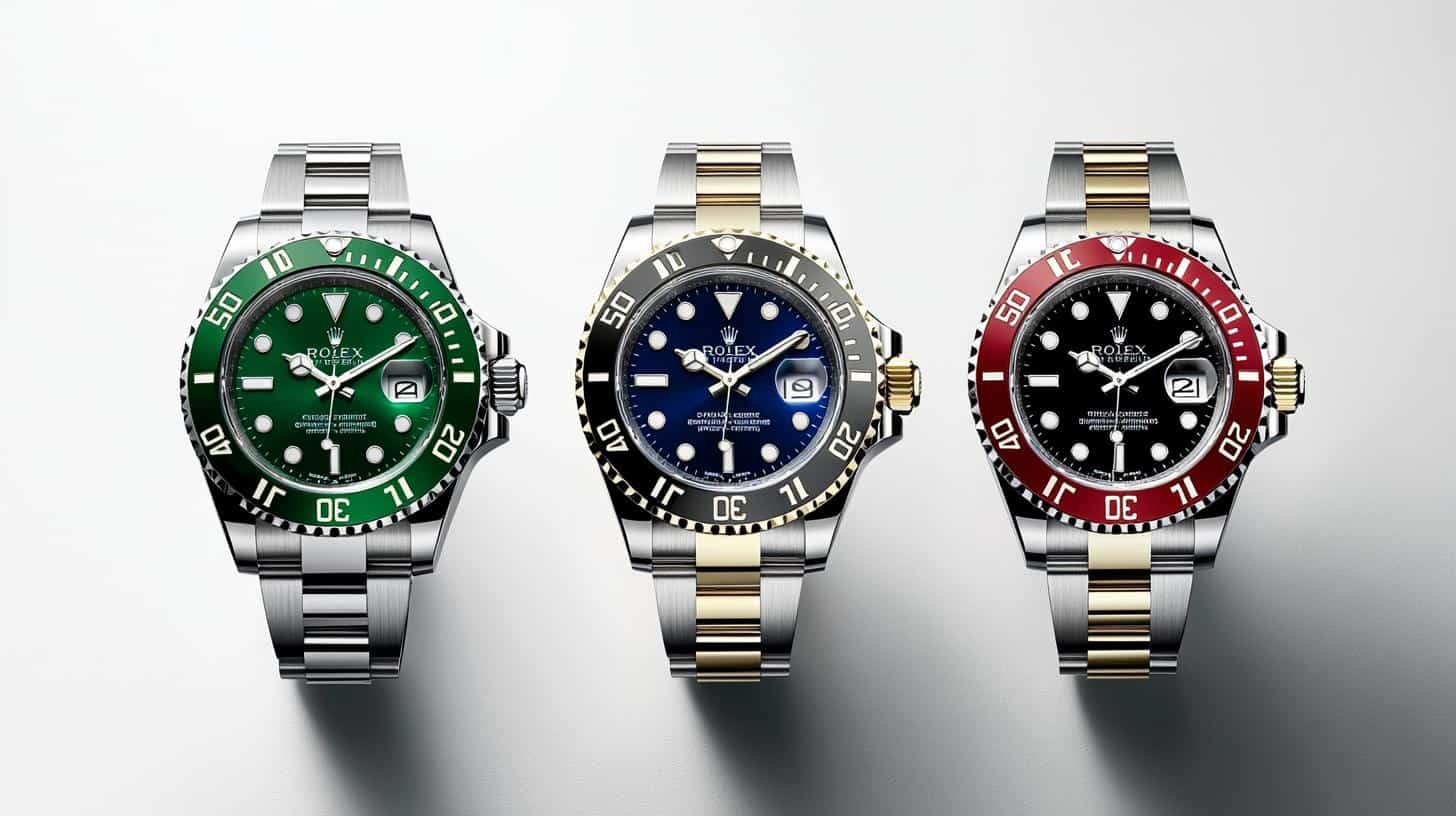The Rolex GMT-Master II is a watch of legendary status, a testament to the brand’s commitment to precision and robustness. Originally introduced in 1982 as an evolution of the original GMT-Master, this timepiece was specifically designed to meet the needs of international pilots, adding a layer of sophistication and practicality to the world of horology.
One of the most significant features of the GMT-Master II is its ability to display multiple time zones simultaneously. It achieves this with the help of an additional hour hand that circles the dial in 24 hours rather than 12, combined with a rotating bezel marked with 24-hour increments. This function makes the GMT-Master II an indispensable tool for frequent travelers and professionals who operate across different time zones.
The GMT-Master II is available in a variety of luxury materials, including stainless steel, Oystersteel, white gold, and Everose gold. Its durability is unparalleled, making it capable of withstanding extreme conditions while maintaining its precision and accuracy. The watch is equipped with the Rolex caliber 3285, a self-winding mechanical movement boasting a power reserve of approximately 70 hours, ensuring reliability.
Aesthetically, the GMT-Master II is as versatile as it is functional. Its iconic two-tone bezel, often referred to as the “Pepsi” or “Coke” bezel, depending on the color scheme, adds a splash of personality and flair to the design. This bold visual element has helped the GMT-Master II become not just a tool, but a symbol of adventure and luxury.
In conclusion, the Rolex GMT-Master II remains a cherished companion for those who navigate the globe, offering a perfect blend of functionality, resilience, and elegance. Its enduring legacy continues to captivate watch enthusiasts worldwide, proving that some designs truly are timeless.
The Global Impact of Iconic Timepieces: Beyond Luxury
The Rolex GMT-Master II, while heralded for its precise engineering and luxury, has fascinating implications on individual lifestyles and global communities. As a tool originally designed for international pilots, its application extends far beyond aviation. The capacity to display multiple time zones revolutionized how business professionals and global travelers manage their schedules, enhancing productivity and efficiency in a 24/7 connected world.
How does this influence everyday life? Given the increasing prevalence of remote work and globalization, even individuals without a watch can benefit from the principles it popularized. The notion of time zone awareness has deeply penetrated smartphone applications and global business strategies, making the once-exclusive functionality mainstream.
What are some interesting controversies? The realm of high-end watchmaking is not without its debates. The exclusivity and price tags of watches like the GMT-Master II often spark discussions about luxury brands perpetuating socio-economic divides. Critics argue that these timepieces, though marvels of craftsmanship, cater primarily to an elite echelon, prompting questions about luxury’s role in societal wealth disparity.
Did you know? The GMT-Master II’s status as a cultural icon has driven enthusiasts to extraordinary lengths. Some collectors wait years on waitlists, while others embrace burgeoning secondary markets, highlighting the profound grip luxury brands have on dedicated consumers.
For more insights on luxury timepieces and their cultural relevance, start your exploration with Rolex. From craftsmanship to cultural impact, their offerings continue to mesmerize a global audience. Whether the GMT-Master II serves as a practical tool or a symbol of prestige, its legacy remains intrinsically linked with modern culture and global connectivity.







